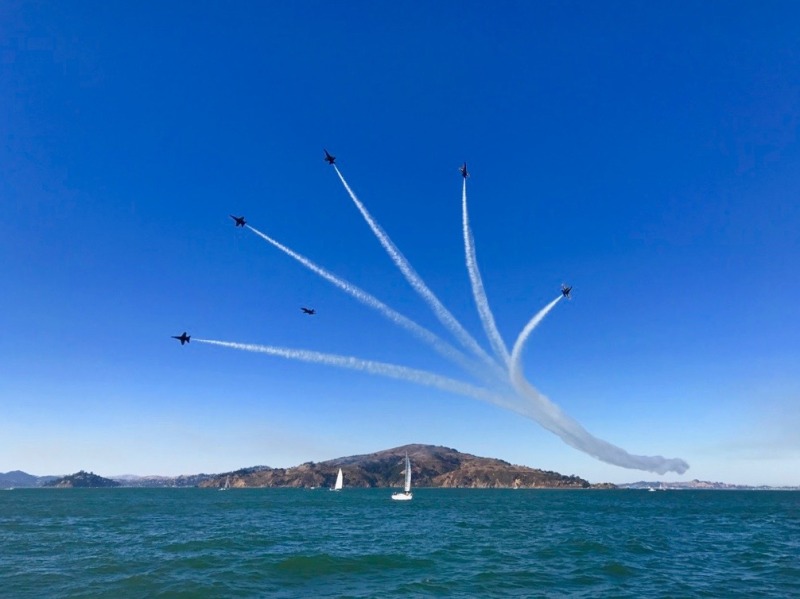
Want a Good Restoration Project?
If you’re looking for a good wooden boat restoration project — along the lines of Endeavour, Chubasco, Dorade or Santana — the boat in the photo could be the one for you. If you squint, you can get an idea of her exquisite lines.
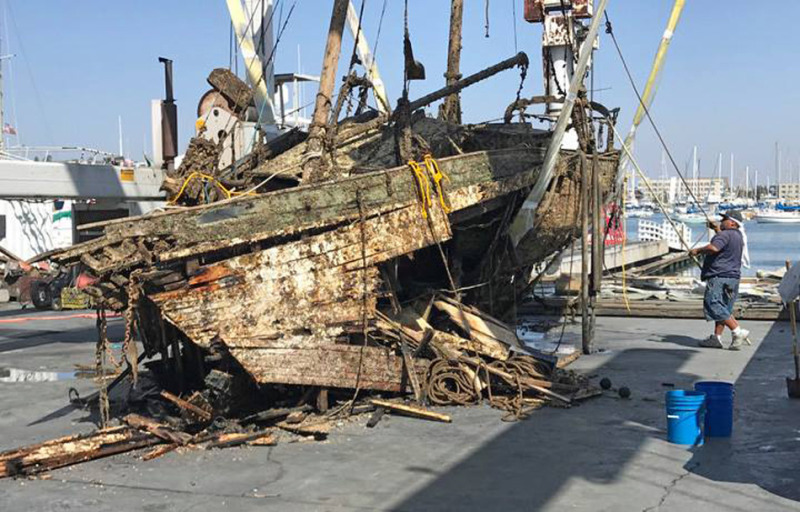
©2017Latitude 38 Media, LLC
Sure, a plank or two might need replacing, which is to be expected. But most of the rough spots can be buffed out, and those that can’t can be painted.
If you look closely, you can see the boat has ‘good bones’ — well, at least a couple of them aft of the mast.
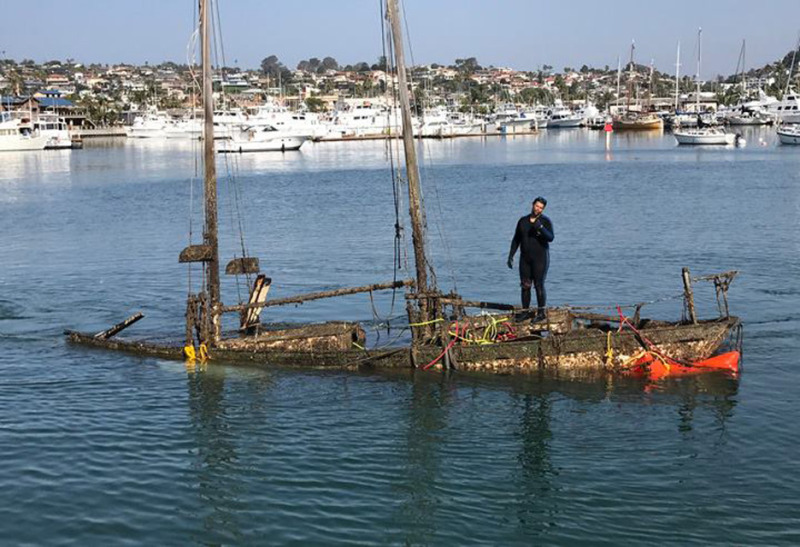
©2017Latitude 38 Media, LLC
Her schooner rig is in excellent shape, as it was reportedly "completely renewed not long ago." We’re told she has a new set of carbon sails still in the bags, plus a spinnaker and two bloopers.
It’s true that she was riding a little low in the water before her haulout, but nothing a few strokes on the bilge pump couldn’t cure. Although the surveyor recommended always carrying four four-ton air bags "as you should do with all wood boats."
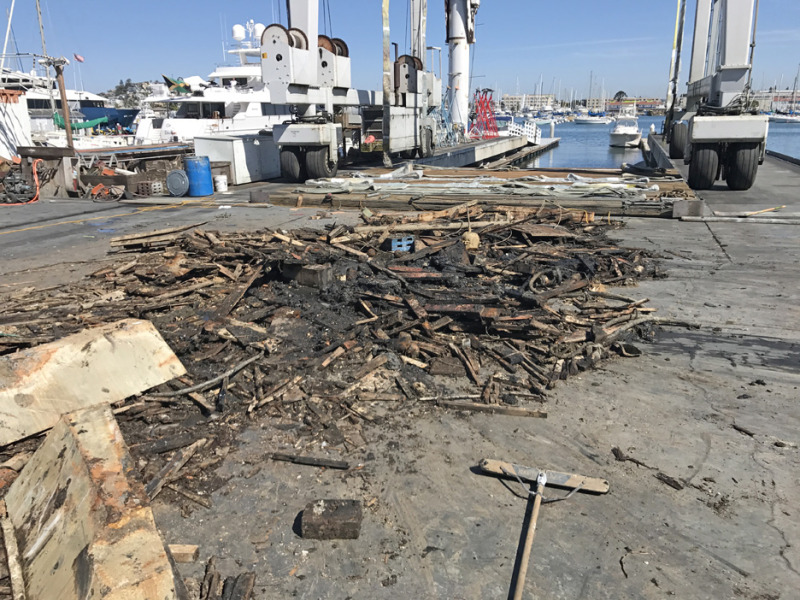
©2017Latitude 38 Media, LLC
The good news is that as of Monday the owner had become flexible on the price. He also hinted at financing and/or a trade on a late-model Porsche.
But don’t wait, as the boat is sure to go fast, what with one San Diego broker claiming to have four offers "over asking."
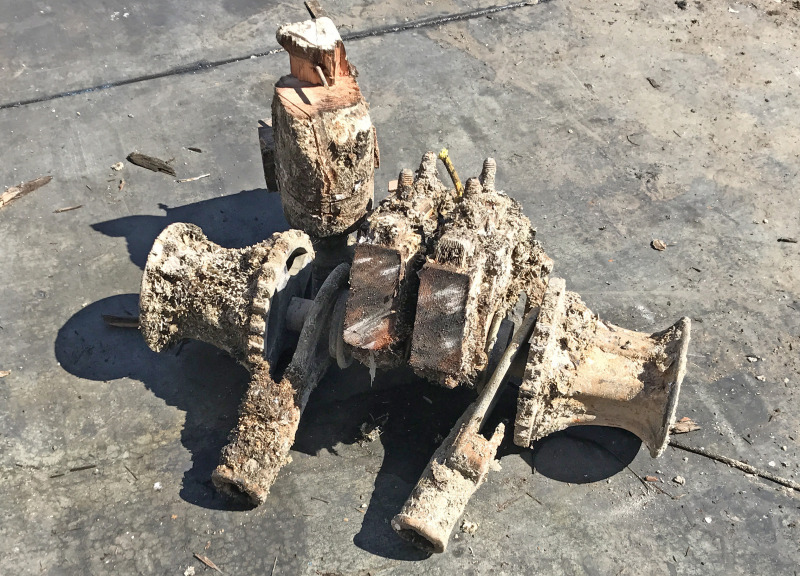
©2017Latitude 38 Media, LLC
Clipper Cove Marina Expansion Vote Today
The Board of Directors of the Treasure Island Development Authority (TIDA) is expected to vote today on several resolutions that move forward with plans to dramatically expand Clipper Cove Marina. Items on the agenda include resolutions accepting the San Francisco Planning Department’s determination that no additional environmental review is required to enter into a proposed lease, as well as the approval and authorization of a 66-year lease agreement between TIDA and Treasure Island Enterprises (TIE) for the development and management of Treasure Island Marina. It also includes a 66-year lease agreement between TIDA and Treasure Island Sailing Center Foundation for the Treasure Island Sailing Center (TISC).
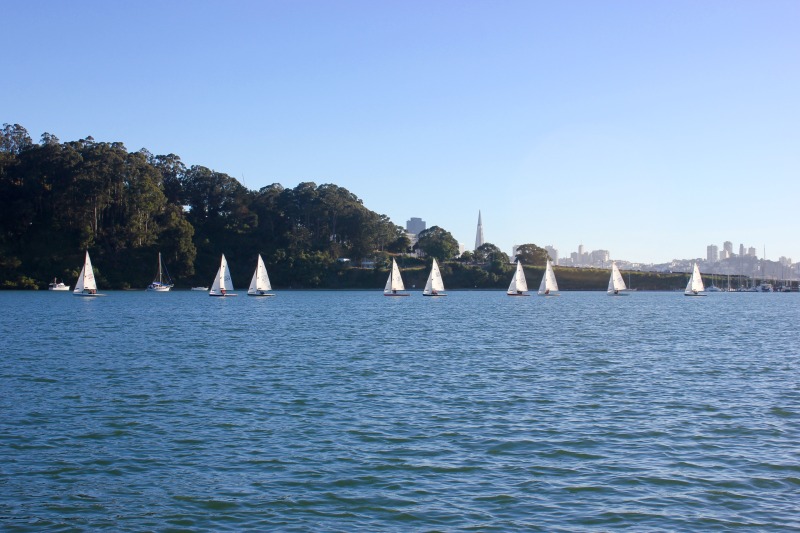
©2017Latitude 38 Media, LLC
The current proposal includes a 313-slip marina — up from today’s 110 slips — that utilizes 882 lineal feet of Clipper Cove and includes five docks. The new marina would include 40-, 50-, 60-, 70- and 80-plus-ft slips, with an average length of 53 feet. Construction would take place in three phases, beginning in early 2019, starting at the easterly end and moving to the west to avoid displacing existing marina users. Original marina plans dating back to 1998-2000 featured a 400-slip marina utilizing 2,013 feet of Clipper Cove. The proposed footprint of the marina has been adjusted over time.
Last year TISC reached a reluctant compromise agreement with TIE, but TISC’s leadership remains concerned about the impact the expansion will have on recreational use of the cove. In a statement in April 2017, Carisa Harris-Adamson, chair of the Treasure Island Sailing Center Foundation Board of Directors, said the compromise agreement would still have a negative impact on not only high school and collegiate sailing, but also adult racing and cruising sailors. "The public value of Clipper Cove is the free open water protected by the Cove which is about 3,797,430 square feet. The footprint of the proposed compromise marina layout would consume about 1,195,275 square feet, an area equivalent to 32% of Clipper Cove, not 15% as stated by TIE’s representative during the (November 2016) Department of Boating and Waterways meeting."
A number of community groups have opposed the scale of the marina expansion, including Baykeeper, Save Clipper Cove and the Sierra Club.
The TIDA meeting is at 1:30 p.m. at San Francisco City Hall, Room 400.
A Flurry of Female Races
The fall sailing season in the San Francisco Bay Area brings us a flurry of female-friendly regattas, starting this Saturday. October 14’s Joan Storer Regatta will be hosted by Tiburon Yacht Club on the east side of the Tiburon Peninsula. The deadline to enter for $40 is Friday (the price then goes up to $50). Half of the entry fee will benefit the Hirshberg Foundation for Pancreatic Cancer Research and Hospice of Marin. "Once again, this race is sponsored by John Storer (son of Joan Storer)," writes Mariellen Stern of TYC. "Members will bring appetizers, and we will have music, a hosted bar and a trophy presentation." Register on Jibeset. UPDATE 10/13: The Joan Storer Regatta has been postponed due to smoke from the North Bay fires.
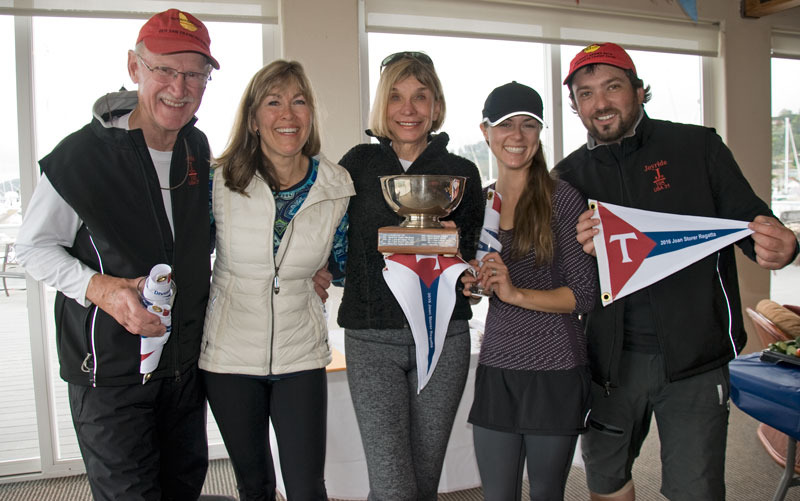
©Latitude 38 Media, LLC
The following Saturday, October 21, South Beach YC will host the Red Bra Regatta for all-female skippers and crew. The club’s menfolk will provide the race committee, BBQ staff and cleanup.
On Saturday, November 4, Richmond YC will host the second annual Amazing Grace Cheney Cup. This one is also for all-female crews. Don’t have a boat? Post on the event’s Crew Board.
Island YC’s Jack & Jill + 1 on Sunday, November 5, will see triplehanded coed crews with women skippers racing on the Oakland-Alameda Estuary. This race will complete Latitude 38’s 2017 Unofficial Women’s Circuit. Participate in a few of the events, collect a list and send it in to our (female) racing editor — you could be crowned Queen of the Women’s Circuit.
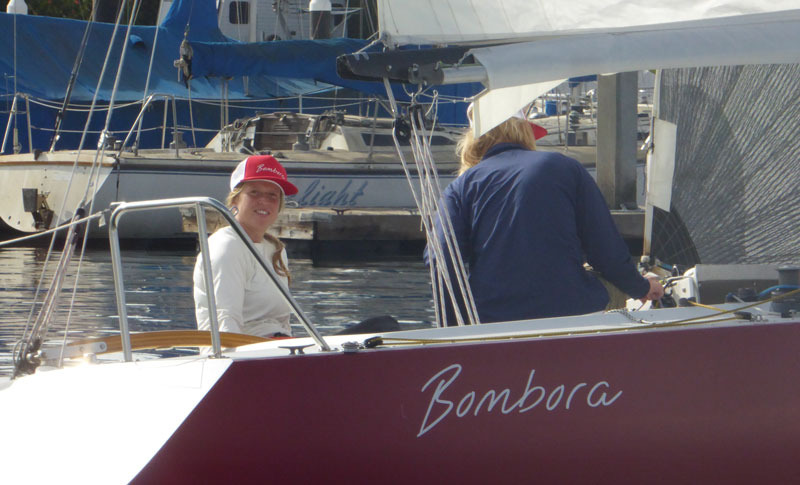
All of the above regattas are open to everyone regardless of yacht club membership. We encourage female owners to get the boat out and male owners to turn over the helm to a crewmember or partner ready to take on the role of skipper.
America’s Cup: Does Speed Matter?
In a recent statement regarding the 36th America’s Cup protocol, Artemis Racing said the following: "The most important consideration for our team is the need for a cutting-edge boat design, one that results in speeds that are as fast or faster than in the last America’s Cup held in Bermuda." To us, this seems to say that if it’s monohulls, the Swedish-based team isn’t racing.
.jpg)
At the Annapolis Sailboat Show last weekend, we heard Ken Read say that for the America’s Cup to keep young sailors like Peter Burling interested — and to inspire the next generation of yachtsmen — the sport needs very high-speed boats.
But is raw speed really the answer? We guess Larry Ellison could spend $30 million developing a high-speed foiling cat that Jimmy Spithill would be interested in sailing, but we also guess if they sailed the America’s Cup in Snipes and paid Jimmy Spithill $10 million, he’d still be interested, and would save Larry $20 mil (not including the cost of the Snipe).
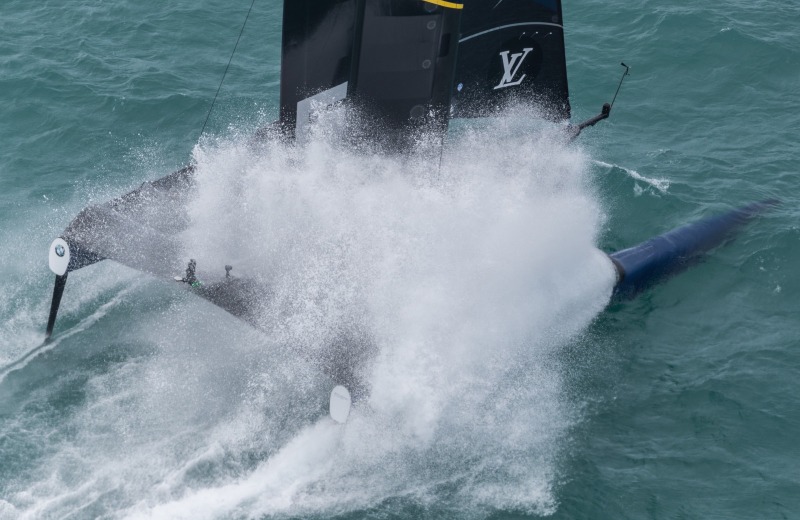
While the foiling cats were incredibly fast (and at times admittedly cool to watch), the response from our readership has clearly and overwhelmingly been in favor of going back to monohulls. So maybe there’s more to it than raw speed.
The Blue Angels just visited the Bay and thrilled spectators with their supersonic acrobatics. The speed certainly gets the juices going, but what really makes the spectacle so dramatic is the closeness of the jets. Imagine just two F/A-18 Hornets going 500 knots 20 seconds apart. Sounds boring, right?
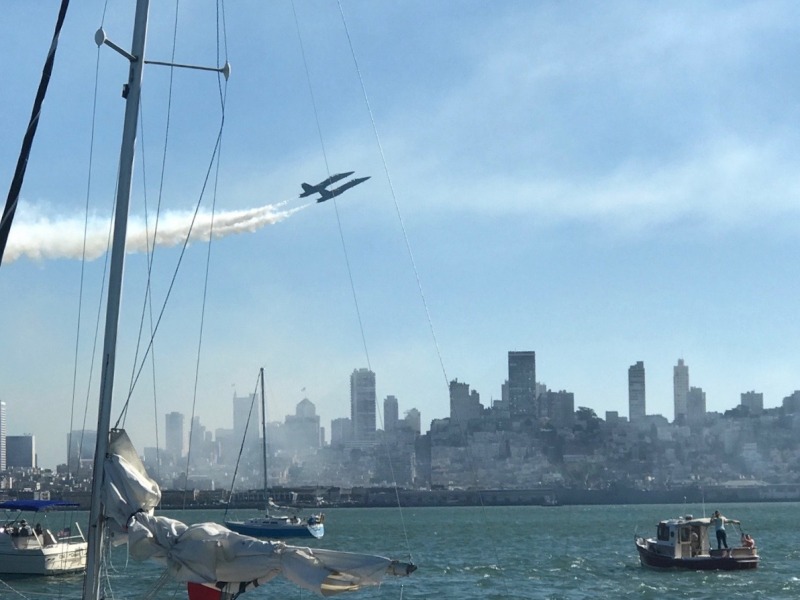
We think Grant Dalton is on the right track. High-tech, high-speed and high-performance monohulls will no doubt be plenty fast, but what we’re looking forward to is more of a human element involved in tight maneuvers, lead changes and close finishes.
In Seahorse Magazine former AC skipper Rod Davis also posed some of these existential quandaries:
"Before we talk about the boats, we should be having the same conversation that Emirates Team New Zealand and Luna Rossa have been having — namely, what is the America’s Cup supposed to be? Are we aiming for a massive show with a worldwide audience, to is it a ‘friendly yachting competition amount nations’? Do you want the sailors to be part of sailing the boat in a normal sense of the word, or do you want the fastest thing we can do?"
As always, we vote for sailing.
Fleet Week: Sailor’s Photo Essays
In these divided times, there is a universal truth that we can all agree on: The Blue Angels are way cool (and the pilots have probably the best job in the world). We bring you the following photos from some of our friends and family.
